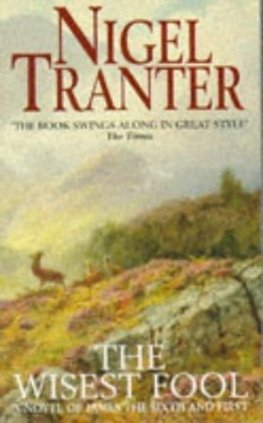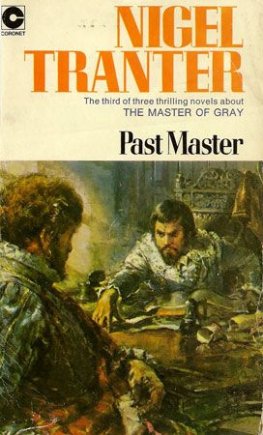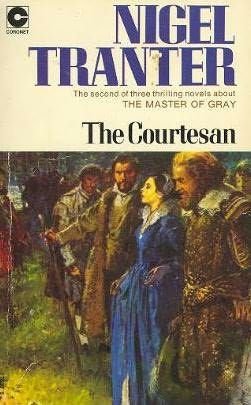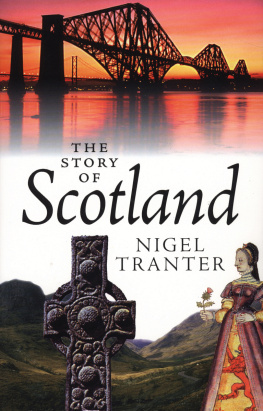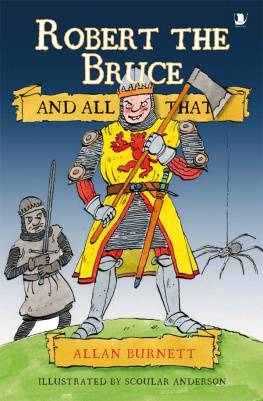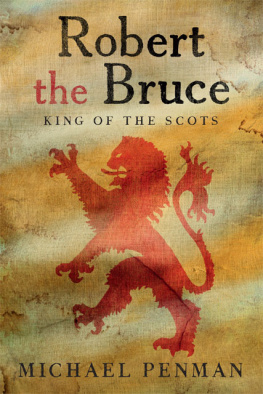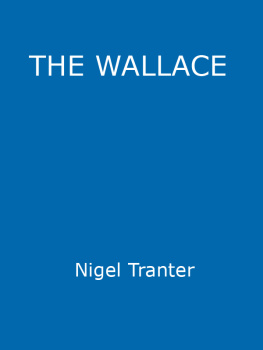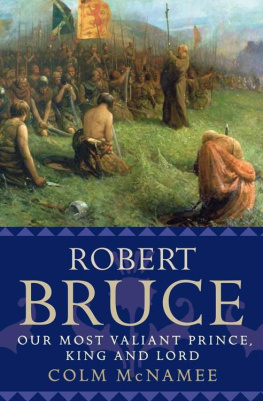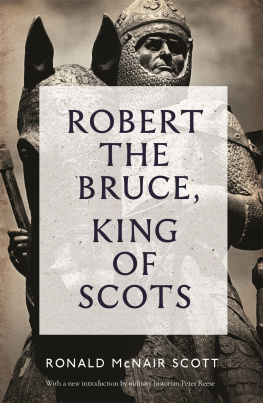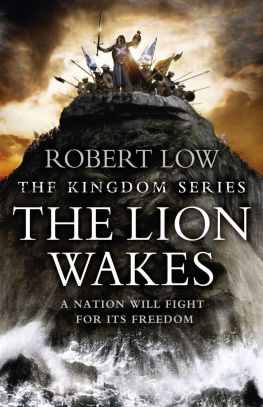THE BRUCE TRILOGY
Book 1
The Steps to the Empty Throne
NIGEL TRANTER
Book One
THE STEPS TO THE EMPTY THRONE
Foreword
When, in 1286, the well-beloved Alexander the Third, King of Scots, fell over a life cliff to his untimely death, he left utter disaster behind him for his country. His only surviving heir was an infant grandchild, a girland a foreign girl at that, and sickly, Margaret the Maid of Norway, daughter of his own daughter who had married the King of Norway and died leaving only this baby. There could have been no less suitable monarch for turbulent Scotlandand almost immediately the dynastic feuding and designing began.
There were innumerable far-out claimants to the throne, mainly descendants of the three daughters of David, Earl of Huntingdon, younger brother of King William the Lion. Of all these, the two with undoubtedly the most valid claims to be next in line to the little Maid of Norway were Robert Bruce, 5th Lord of Annandale, and John Baliol. The former was the son of Earl Davids daughter Isabel; the latter the grandson of her elder sister Margaret. Baliols father was an English lord, his mother the famous Devorgilla, Lady of Galloway, founder of Baliol College, Oxford.
Robert Bruce lost no time in making his position clear. With his son, the sixth Robert, who had married the Celtic Countess of Carrick in her own right, another Galloway heiress, he invaded that wild and beautiful province of SouthWest Scotland against the Baliol interests now established there. And with success. In the civil war old Brucehe was then seventy-sixwon most of the province, including the royal castles of Wigtown and Dumfries (then considered part of Galloway) and the Baliol seat of Buittle, former headquarters of the ancient Lords of Galloway.
He,was now well placed to exert suitable influence on the child monarch when she should appear; and meantime to dominate Scotland.
Two events conspired to confound his plans. Edward the First, puissant
warrior King of England, perceived a notable opportunity to take over
Scotland as a vassal kingdom, by marrying his young son to the infant
Maidwho was indeed his own grand nieceand moved to that effect, at
the Treaty of Birgham. Then, the same year, 1290, the said Maid died
at Orkney, on her pathetic way to her new kingdom.
All was changed. Edward had placed himself in a position of political and military power, on the Border. Scotland was leaderless and disunited, the competitors for the empty throne balanced between civil war and invasion.
Edward acted shrewdly. Dissimulating his own ambitions, he offered to preserve the peace by acting as honest broker. If the claimants to the Scots crown would submit their cases to him, he would act fair arbiter and so save strife.
It must be remembered that at this stage Scotland and England were good friends. The long centuries of warring had not yet started. Most of the Scots nobles owned lands in England, and vice versaindeed they were nearly all equally Norman-French in origin. Edward was the foremost prince of Christendom, renowned, admired. His offer was accepted.
The Plantagenet, for his own purposes, in 1292 chose John Baliol as King of Scots. And, as an afterthought to the judgement, announced he himself was Lord Paramount of Scotland.
Thereafter, for four inglorious years, the weak Baliol attempted to rule a restive Scotland whilst suffering Edwards dominance. This was no theoretical over lordship Grimly, savagely, Edward rubbed his puppets nose in the dirt. He summoned him to London to give accounts of his stewardship; even had him arraigned before the Kings Bench of England for judgement, like any criminal. At length, in 1296, even Baliol revolted, and taking to arms, made a mutual support treaty with France, also suffering from Edwards oppression. The English invaded Scotland in overwhelming strength. The Bruces, and many like them, did not support Baliol they never had done. The puppet king fell, and Edward Longshanks was master of Scotland, at last.
Old Bruce, the Competitor, was now dead, and his son the sixth Lord of Annandale no warrior, though proud enough to have resigned his earldom of Carrick to his own eldest son, another Robert, aged twenty-two, rather than make fealty for it to Baliol.
The new Earl of Carrick was a very different character. Robert the
Bruce is one of the great heroic figures of all time. But he was not
always a herojust as he was not always a king. He grew towards both,
indeed, under the shadow of a still greater hero-William Wallacein
the terrible forcing-ground of heroism and
PRINCIPAL CHARACTERS
In Order of Appearance
King Edward the First: King of England; Hammer of the Scots.
Anthony Beck, Bishop of Durham : Capt. General of St. Cuthbert.
Robert Bruce, Earl of Carrick : eldest son of Lord of Annandale.
John Baliol, King of Scots.
John Comyn, Earl of Buchan : High Constable of Scotland.
Robert Bruce, Lord of Annandale and Cleveland : son of the Competitor.
Lord Nigel Bruce : third son of above Lady Elizabeth de Burgh :
daughter of the Earl of Ulster.
Richard de Burgh, Earl of Ulster : friend and companion of Edward.
Gartnait, Earl of Mar : brother-in-law of Bruce.
Gilbert de Clare, Earl of Gloucester: son-in-law of Edward and kinsman of Bruce.
Sir John Comyn, Lord of Badenoch : head of the great Comyn family, and kinsman of Buchan.
Sir Nicholas Segrave : an English knight and captain.
Master John Benstead: Clerk, and Keeper of King Edwards Pantry.
Eleanor de Louvain, Lady Douglas : second wife of Sir William Douglas.
James Douglas: heir of Sir William, later The Good Sir James.
Sir William Douglas : 5th lord thereof.
Lord James Stewart : High Steward of Scotland.
Master Robert Wishart, Bishop of Glasgow : patriot.
Sir Alexander Lindsay, Lord of Crawford.
Sir John de Graham of Dundaff : one of the few noblemen who supported Wallace.
Sir Andrew de Moray, Lord of Bothwell : heir of Moravia.
William Wallace : second son of Sir Malcolm Wallace of Elderslie, a small laird and vassal of the Steward.
Alexander Scrymgeour : one of Wallaces band. Later Standard
Bearer.
Sir Henry Percy, Lord of Northumberland : nephew of Surrey the English commander.
Sir Robert Clifford, Lord of Brougham : an English baron.
Lord Edward Bruce : second son of Annandale. Later King of Ireland.
Master William Comyn: Provost of the Chapel-Royal. Brother of Buchan.
Master William Lamberton : Chancellor of Glasgow Cathedral.
Later Bishop of St. Andrews and Primate.
Lady Marjory Bruce : child daughter of Bruce.
Lady Christian Bruce, Countess of Mar : second daughter of Annandale.
Later wife of Sir Christopher Seton.
Margaret of France, Queen : second wife of King Edward.
Sir John de Botetourt : bastard son of Edward. Warden of the West March.
John of Brittany, Earl of Richmond: nephew of Edward and Lieutenant of Scotland.
Sir John Stewart of Menteith : second son of Earl of Menteith and Governor of Dumbarton Castle.
Sir Christopher Seton: a Yorkshire knight married to Lady Christian Bruce.
Sir Roger Kirkpatrick of Closeburn : a Bruce vassal.
Abbot Henry of Scone : custodian of the Stone of Destiny.
Isabel, Countess of Buchan : daughter of Mac Duff Earl of life, and wife of the High Constable.
Aymer de Valence, Earl of Pembroke : English commander.
The Dewar of the Coigreach : hereditary custodian of St. Fil Ians crozier, in Glendochart.
PART ONE
Chapter One
Even strong men, hard-bitten, grim-faced men winced as the horseman rode right into the church, iron-shod hooves striking sparks from the flagstones, their noisy clatter stilling all talk and reverberating hollowly under the hammer-beam roof. Stracathro was no mighty church, merely a prebend of the nearby Cathedral of Brechin, and horse and rider seemed enormous in its narrow echoing constriction.
Next page


